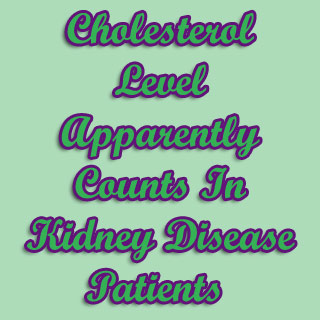
Though most people may be aware of increased risk for CVD due to high cholesterol in the general population, relationship in CKD patients is under covers. Investigations have claimed that dialysis patients with elevated higher cholesterol levels die at a lower rate than those with lower cholesterol levels. It was mentioned that high cholesterol is not beneficial, in fact indicates a lesser degree of malnutrition and inflammation. Both are considered serious and interrelated complications of kidney disease.
“In CKD patients, the inconsistent and often inverse relationship of cholesterol level with CVD and overall mortality may be explained by the presence of malnutrition and/or inflammation. Whereas traditional risk factors such as elevated blood cholesterol levels remain important, they appear to compete and interact with non-traditional risk factors such as malnutrition and inflammation. Doctors caring for CKD patients should take into account the presence of malnutrition and inflammation as they interpret blood cholesterol levels,” quoted Dr. Gabriel Contreras MD MPH University of Miami Miller School of Medicine.
In order to ascertain whether malnutrition and/or inflammation changes the relationship of cholesterol and CVD analyzed 990 African-Americans with hypertension and CKD. None of the participants were on dialysis, 31 percent had malnutrition and/or inflammation. On completion of 12 years, 20 percent patients reported a new CVD event like heart attack, stroke, congestive heart failure, or death from heart disease. Similar complications were registered by 19 percent patients with malnutrition and/or inflammation and 21 percent without malnutrition and/or inflammation.
Patients with malnutrition and/or inflammation with high blood cholesterol levels did not seem to be linked with CVD events. But patients without malnutrition and/or inflammation displayed a 69 percent risk of developing new CVD event along with increase in cholesterol levels. It was observed that patients with cholesterol levels less than 200 mg/dL and between 200 and 239 mg/dL had a 1.19-fold increased risk. Chances seemingly elevated to a 2.18-fold in those with cholesterol levels of 240 mg/dL or more. Researchers assume that malnutrition and/or inflammation confuses blood cholesterol readings in CKD patients. Therefore, physicians may investigate the causes of high or low cholesterol in patients.
The study will be published in an upcoming issue of the Journal of the American Society Nephrology (JASN).
